For business executives and managers, competitive analysis is the most important part of their job description. They need to know the competitors and their strategies inside out in order to develop their own effective marketing strategies.
Strategic analysis is the core step of the strategic planning cycle. Every strategist should have a set of analytical model tools to deal with. However, there are many techniques and tools available for strategic analysis. If you search Google on the Internet, you will find many options available.
What is strategic analysis?
First, what is strategic analysis? Strategic analysis can help you explore growth options, address industry challenges, and make better business decisions.
Strategic analysis is a method of facilitating, researching, analyzing and mapping an organization’s ability to achieve a future state based on its current reality, usually taking into account the organization’s process, technology, business development and people capabilities.

You need to look outside our organization for external changes and look to the future and think about future opportunities.
Strategic analysis is more than understanding change. It is translating into concrete action by generating choices and choices, making decisions and incorporating them into the organization’s planning process.
Selected strategic analysis tools
Just as having the right tools doesn’t necessarily make you a great mechanic, having the right strategic analysis tools doesn’t make you a great strategist — but they do help you do your job more effectively. Here is a list of basic tools for strategic analysis:
SWOT analysis
SWOT analysis is a technique developed at Stanford in the 1970s and is often used in strategic planning . SWOT is an acronym for strengths, weaknesses, opportunities, and threats. It is a structured planning method used to evaluate the four elements of organization, project, or business risk. SWOT analysis is a simple and powerful framework that can take full advantage of the organization’s strengths, improve weaknesses, minimize threats, and take advantage of opportunities as much as possible.
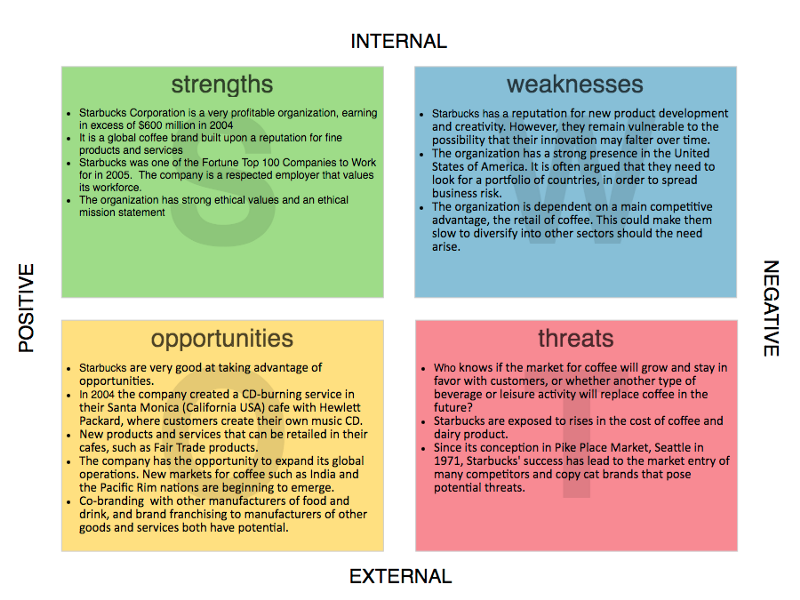
SWOT analysis is the process by which the management team determines the internal and external factors that affect the company’s future performance. It can help us identify what is happening internally and externally so that you can plan and manage your business in the most effective and efficient way.
PEST analysis
PEST analysis is a useful tool for understanding market growth or decline, as well as a useful tool for understanding the status, potential and direction of an enterprise. PEST is an abbreviation for political, economic, social and technical factors, used to evaluate the market of business or organizational units. Sometimes it is expanded to include legal and environmental factors and is called PESTLE analysis.
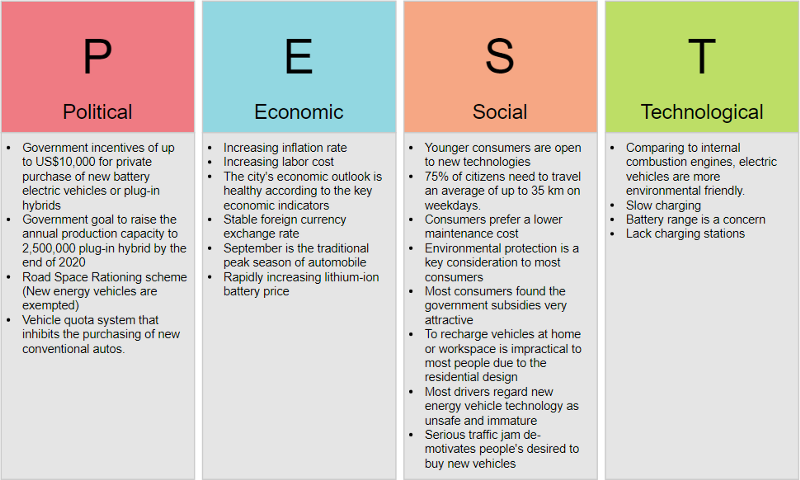
Edit PEST Analysis Example Online
PEST analysis guides us to determine effective strategies for determining priorities, allocating resources, planning time and development roadmaps, and formulating control mechanisms. Through this analysis, you can identify potential opportunities and threats related to your strategy and find ways to use them and avoid them.
Value chain analysis
Value chain analysis is a way to visually analyze a company’s business activities to understand how the company creates a competitive advantage for itself. Value chain analysis helps a company understand how it adds value to something, and how the value of its product or service subsequently sells exceeds the cost of adding value, thereby generating profit margins. In other words, if they operate effectively, the value obtained should exceed the cost of running them, that is, customers should return to the organization and conduct transactions freely and voluntarily.
Value chain analysis began in the 1980s by Michael Porter , and it is a conceptual concept of value chain form appreciation. He suggested dividing an organization into “main activities” and “support activities”. The following figure divides the activities suggested by Porter’s value chain analysis model into main activities and supporting activities.
Edit Value Chain Example Online
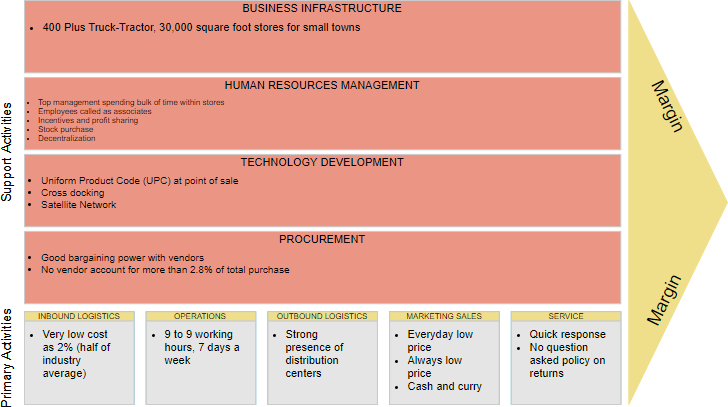
Five Forces Analysis
Michael Porter developed the Five Forces model in 1980. Michael Porter’s Five Forces is a powerful competitive analysis tool to determine the main competitive influence in the market. This is a widely used business model, which refers to five important factors that drive a company’s competitive position in an industry. By considering how each force affects you, and by determining the strength and direction of each force, you can quickly assess the strength of this position and your ability to make sustained profits in this industry. Therefore, the five forces analysis can help you stay competitive:
- Knowing the strength of these five forces, you can formulate strategies to help their companies become more competitive and profitable.
- Looking at the opportunities, you can strengthen the position of the organization compared to other participants to reduce competitive pressure and create a competitive advantage.
Edit Five Force Example Online
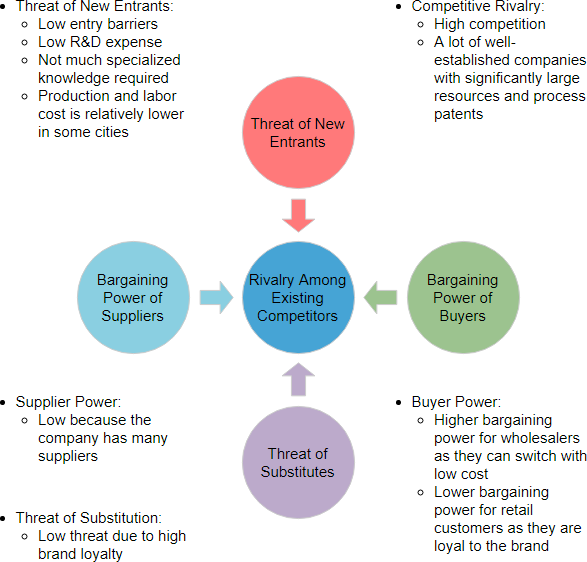
Four corner analysis
The four-corner analysis model developed by Michael Porter is a good way to help corporate strategists evaluate competitors’ intentions and goals, and the advantages it uses to achieve their goals. It is a useful technique to evaluate competitors and gain insights about possible competitor strategy changes and determine the competitor’s response to environmental changes and industry changes. By examining competitors’ current strategies, future goals, market assumptions and core capabilities, Four Corners Model helps analysts solve four core problems:
- Motivation-What drives the competition? Look for drivers at different levels and at different levels so that you can have a deeper understanding of your future goals.
- Current strategy-what is the competitor doing and what can the competitor do?
- Capability-What are the advantages and disadvantages of competitors?
- Management Assumptions-What assumptions did the management team of the competitor make?
Edit Four Corners Analysis Example Online
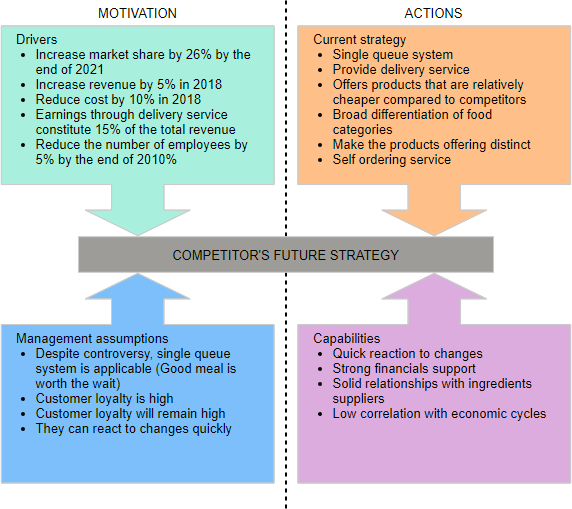
Business Motivation Model (BMM)
If an enterprise specifies a certain method for its business activities, then it should be able to explain why and what results it wants to achieve. The Business Motivation Model (BMM) is a business decision modeling symbol supported by OMG on how to deal with the ever-changing world. Companies can buy BMM modeling tools, and then create their own BMM to use it-fill the model with company-specific business information. There are two broad purposes:
- Capture decisions about changes in response to changes and formulate their rationale to make them shareable, learn from experience to increase clarity and improve decision-making.
- Refer to the results of determining the impact on its operations (such as changes to business processes and organizational responsibilities), and provide traceability from influencers to operational changes.
BMM provides support in four areas, as shown in the following figure:
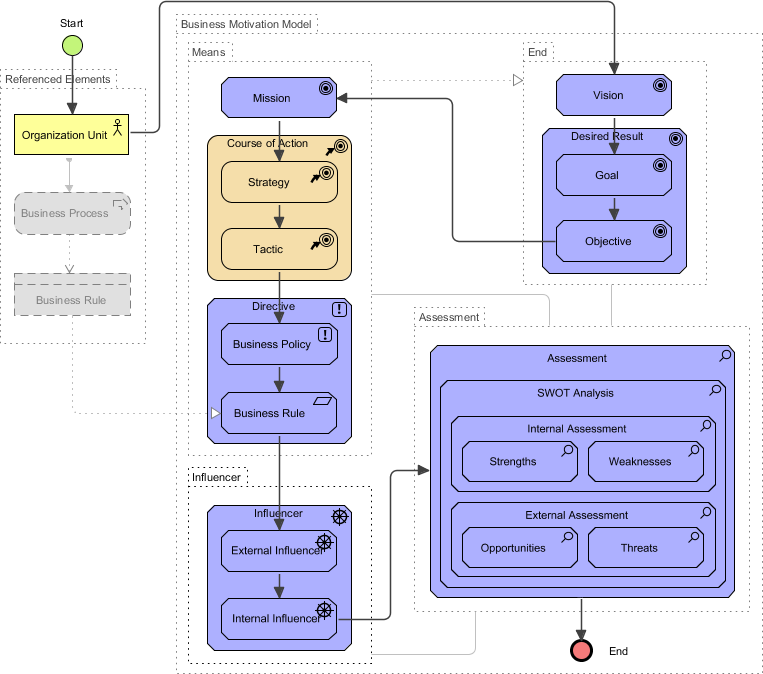
Scope
The scope of enterprise BMM may be the entire enterprise or one of the organizational units. Outside the boundaries of “enterprise”, higher-level organizational units may appear to lower-level units as affecting the organization, and their instructions may have regulatory status. Enterprise BMM does not have to represent the entire enterprise. Stakeholders can create a partial view of the BMM, citing only those parts of the business that are related to his/her responsibilities and decision-making power.
Finish
Finally, it defines what an enterprise wants to be ((to-be). There are three levels:
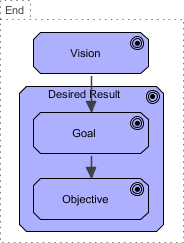
means
It means to define the decisions an enterprise needs to make in order to achieve its goals. There are three types:
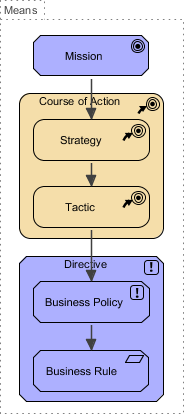
Influencer
An influencer is what a company decides that might affect it. There are two main categories:
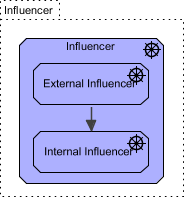
evaluate
When the influencer changes significantly, the company will assess its impact and identify risks and potential rewards. There may be multiple assessments, possibly from different stakeholders.
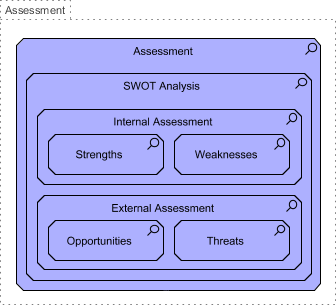
Strategic planning for cooperation with BMM
The OMG Business Motivation Model (BMM) provides an excellent framework for developing, communicating and managing strategic plans. The framework reflects widely accepted strategic planning techniques and helps you determine the strategic drivers and strategic goals in your strategic planning.
Guidance process with BMM strategic planning
For starters, the learning curve for implementing BMM may be a bit steep. The interconnection between elements is difficult to maintain and visualize, which is why the BMM guidance process appears.
BMM Guide-Through provides a general process to assist you in developing a business motivation model. Through a gradual process, the core components of strategic planning will be determined. The result information will be automatically archived in the form of a document.
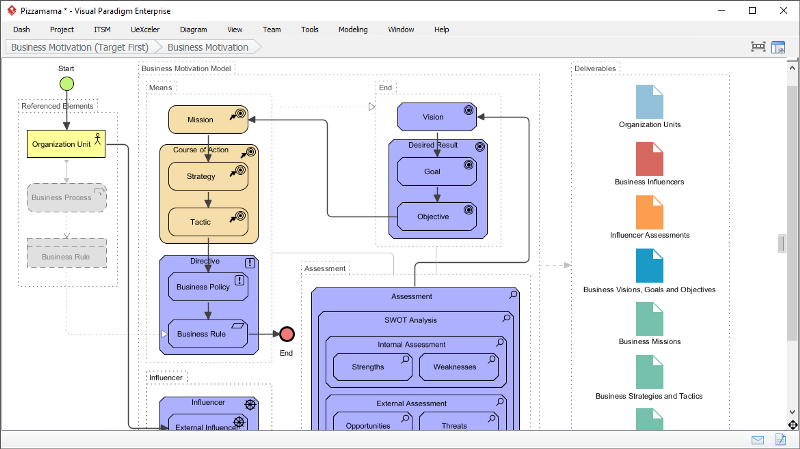
Benefits of the BMM coaching process:
- Structured into activities and steps, with instructions and samples embedded
- Progress indicator showing your location and the status of completing activities and steps
- Query and visualize the structure and information of complex elements in ArchiMate diagrams
- Perform work and automatically generate deliverables and reports
- Automatically transcribe data from one step to another to perform further operations or perform different forms of analysis to ensure consistency between elements.





